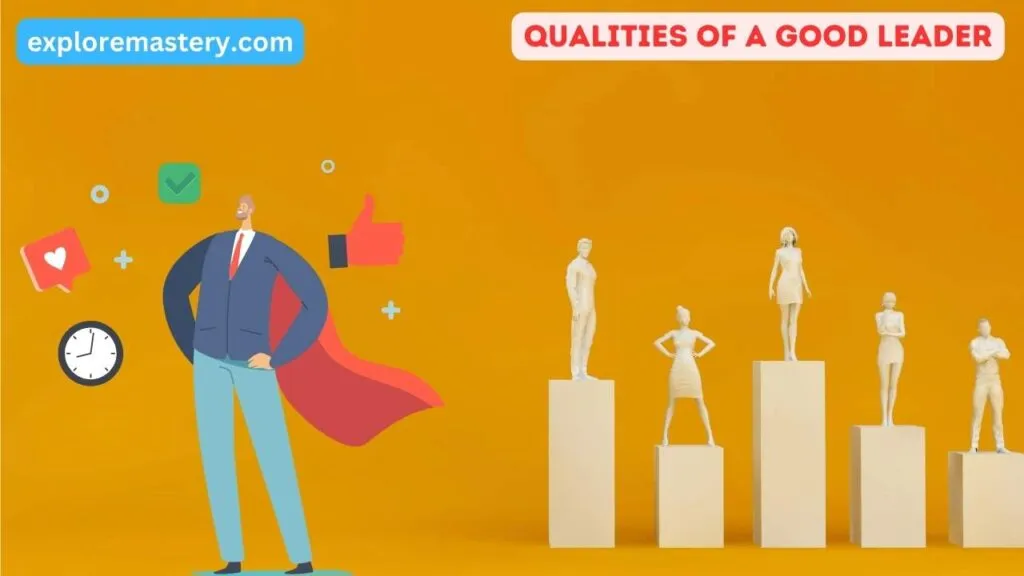In the ever-evolving landscape of modern organizations, the role of leadership has transcended beyond mere management and strategic planning. Today, leaders are increasingly recognized for their ability to wield symbolic power—using symbols, stories, and archetypes to inspire, motivate, and transform their organizations. This article delves into the power of symbolic leadership, exploring its essence, its impact on organizational culture, and its future in a digital age.
Overview
- Symbolic leadership involves using symbols, stories, and archetypes to inspire and motivate people within an organization.
- Modern organizations benefit from symbolic leadership as it helps build a cohesive vision, create emotional connections, and foster a sense of belonging.
- Different archetypes, such as the entrepreneur, coach, and visionary, serve as powerful symbols of leadership in contemporary settings.
- Symbolic actions, including gestures and rituals, have a ripple effect that can significantly influence organizational behavior and culture.
- While symbolic leadership offers numerous advantages, it also presents challenges like misinterpretations, balancing authenticity, and navigating cultural differences.
Table of contents
The Essence of Symbolic Leadership

Understanding Symbolic Leadership
Symbolic leadership is about more than just managing tasks and people; it’s about providing vision and inspiration. Symbolic leaders use their personal charisma and a flair for drama to get people excited and committed to the organizational mission. They act as prophets and visionaries, using symbols, telling stories, and framing experiences in ways that give people hope and meaning.
The Role of Symbols in Leadership
Symbols are like keys that trigger archetypal patterns of behavior. They can be anything from physical objects to actions or even words that represent deeper meanings. In leadership, symbols help to create a shared understanding and a sense of unity among team members. They are essential in communicating the values and vision of the organization.
Why Symbols Matter in Modern Organizations
In today’s fast-paced and ever-changing business environment, the right symbols can make a significant impact. They help in building a strong organizational culture, fostering a sense of belonging, and inspiring employees to work towards common goals. The essence of leadership symbols lies in their ability to influence behavior and create emotional connections.
Exploring the essence of leadership symbols and their impact on behavior and unity emphasizes the importance of selecting the right symbol for effective leadership.
By understanding the symbolic leadership meaning, leaders can harness the power of symbols to drive organizational success.
Transforming Organizational Culture Through Symbols
Building a Vision with Symbols
Symbols are habitually used by organizations to transform the meaning of their actions and intentions in ways that enable them to manage complex stakeholder relationships and achieve competitive advantage. By unfolding its prime sensethrough zero structure to the context of transformation, leaders can create a compelling vision that resonates deeply with their teams.
Creating Emotional Connections
Symbols have the power to evoke strong emotions and foster a sense of unity within an organization. When leaders use symbols effectively, they can create emotional connections that inspire and motivate their teams. This emotional bond is crucial for maintaining high levels of engagement and commitment.
Fostering a Sense of Belonging
A well-chosen symbol can make employees feel like they are part of something larger than themselves. This sense of belonging is essential for building a cohesive and motivated workforce. By integrating symbols into the organizational culture, leaders can help employees find meaning and purpose in their work.
The symbolic power model provides theoretical leverage for understanding many situated contexts, making it a valuable tool for leaders looking to transform their organizational culture.
Modern Symbols of Leadership
The Entrepreneur Archetype
The entrepreneur archetype is a symbol of leadership associated with the process of innovation, team building, actualizing ideas, persistence, and follow-through. Entrepreneurs are often seen as trailblazers who navigate uncharted territories and bring new concepts to life. They embody the spirit of creativity and resilience, inspiring others to think outside the box and pursue their passions.
The Coach Archetype
The coaching archetype is a leadership symbol associated with human development, skill building, and the cultivation of team harmony. Coaches are mentors who guide their teams towards achieving their full potential. They focus on nurturing talent, fostering collaboration, and creating an environment where everyone feels valued and supported.
The Visionary Archetype
The visionary archetype represents leaders who have a clear and compelling vision for the future. These leaders are often seen as forward-thinkers who can anticipate trends and inspire others to work towards a common goal. Visionaries use symbols like the telescope to signify their ability to see beyond the present and plan for long-term success.
Symbols are like keys that trigger archetypal patterns of behavior. By understanding and embodying these modern symbols of leadership, leaders can inspire and motivate their teams to achieve greatness.
Harnessing the Power of Symbolic Actions

Inspiring Through Symbolic Gestures
Symbolic action generates results greater than the effort behind it. The greatest power of symbolic action lies in its ability to generate a net return far in excess of the effort or cost put into it. How can this be? Actions speak louder than words, and when leaders take symbolic actions, they send powerful messages that resonate throughout the organization. These actions can be as simple as a handwritten note of appreciation or as grand as a public acknowledgment of a team’s hard work.
The Ripple Effect of Symbolic Actions
Second, symbolic action is contagious because it utilizes another basic principle of human nature: People want to emulate successful leaders that they genuinely respect. Positive symbolic action spreads throughout an organization because people feel uplifted when they do thoughtful acts for each other. Then, as they receive promotions into positions of greater leadership, they remember the positive symbolic actions they have seen. They then repeat those actions in the hope that such positive acts will continue to inspire and motivate others.
Case Studies of Successful Symbolic Leadership
Such actions added little tangible or economic value to the organizations, but the symbolic nature of those actions created intangible benefits well in excess of the cost of the acts themselves. Common elements of positive symbolic actions include:
- The leader consciously decides to take an action
- The action is meaningful and resonates with the organization’s values
- The action is visible and can be emulated by others
Symbolic actions are habitually used by organizations to transform the meaning of their actions and intentions in ways that enable them to manage complex stakeholder relationships and achieve competitive advantage.
There are countless examples of positive symbolic actions that leaders use to demonstrate and generate respect and appreciation, and no list can recount them all. But they all have the following common elements: The leader consciously decides to take an action, the action is meaningful and resonates with the organization’s values, and the action is visible and can be emulated by others.
Challenges and Opportunities in Symbolic Leadership
Overcoming Misinterpretations
Symbolic leaders often face the challenge of overcoming misinterpretations of their actions and symbols. Misunderstandings can arise when symbols are not universally recognized or when they carry different meanings in diverse cultural contexts. Leaders must be adept at clarifying their intentions and ensuring that their symbols resonate with their audience.
Balancing Symbolism and Authenticity
While symbols can be powerful tools for leadership, it is crucial to balance symbolism with authenticity. Leaders who rely too heavily on symbols without genuine actions may be perceived as insincere. Authenticity ensures that the symbols used are a true reflection of the leader’s values and the organization’s mission.
Navigating Cultural Differences
In a globalized world, leaders must navigate cultural differences when employing symbols. What may be a powerful symbol in one culture could be meaningless or even offensive in another. Understanding and respecting these differences is essential for effective symbolic leadership.
Symbolic leaders believe that the essential task of management is to provide vision and inspiration. They rely on personal charisma and a flair for drama to get people excited and committed to the organizational mission.
By addressing these challenges, leaders can harness the full potential of symbolic leadership to inspire and unite their teams.
The Future of Symbolic Leadership
Evolving Symbols in a Digital Age
As we move further into the digital age, the symbols of leadership are evolving rapidly. Modern symbolic leaders must adapt to new forms of communication and representation. Digital platforms offer a plethora of opportunities to create and disseminate symbols that resonate with a global audience. From emojis to viral hashtags, the digital landscape is rich with potential for symbolic leadership.
The Role of Technology in Symbolic Leadership
Technology is not just a tool but a powerful symbol in itself. Leaders who harness technology effectively can project an image of innovation and forward-thinking. Virtual reality, augmented reality, and artificial intelligence are becoming new symbols of cutting-edge leadership. These technologies can create immersive experiences that inspire and engage teams like never before.
Predictions for the Next Decade
The next decade will likely see a blend of traditional and modern symbols in leadership. While the essence of symbolic leadership remains the same, the mediums and methods will continue to evolve. Leaders will need to be more adaptable, culturally aware, and technologically savvy. The future of symbolic leadership is bright, filled with opportunities to inspire and lead in innovative ways.
The future of symbolic leadership isn’t just about grand gestures—it’s about intentional choices that shape meaning and inspire collective action.
Conclusion
In the ever-evolving landscape of modern organizations, the power of symbolic leadership cannot be overstated. While traditional symbols of power and status may seem outdated, they still hold a place in the collective psyche, influencing behaviors and perceptions. However, the true essence of symbolic leadership lies in its ability to inspire, motivate, and bring people together. By harnessing the right symbols, leaders can project clarity, humility, and creativity, fostering an environment where innovation and collaboration thrive. As we move forward, it is essential for leaders to evolve beyond old-world hierarchies and embrace symbols that resonate with the values of today’s society. In doing so, they can create a legacy of positive influence, guiding their organizations toward a future filled with hope, meaning, and shared success.
Frequently Asked Questions
What is symbolic leadership?
Symbolic leadership involves the use of symbols, stories, and rituals by leaders to convey messages, inspire teams, and shape organizational culture. It emphasizes vision and inspiration over traditional hierarchical power.
Why are symbols important in modern organizations?
Symbols are crucial in modern organizations because they help create emotional connections, foster a sense of belonging, and communicate the organization’s values and vision effectively.
How can leaders use symbols to transform organizational culture?
Leaders can use symbols to build a shared vision, create emotional connections among team members, and foster a sense of belonging. This can be achieved through symbolic gestures, rituals, and storytelling.
What are some modern symbols of leadership?
Modern symbols of leadership include archetypes such as the Entrepreneur, who symbolizes innovation and persistence; the Coach, who represents human development and team harmony; and the Visionary, who embodies foresight and inspiration.
What are the challenges of symbolic leadership?
Challenges of symbolic leadership include overcoming misinterpretations of symbols, balancing symbolism with authenticity, and navigating cultural differences to ensure symbols are understood and respected across diverse groups.
How is technology influencing symbolic leadership?
Technology is influencing symbolic leadership by providing new platforms for leaders to share their vision and symbols, enabling real-time communication, and allowing for the creation of digital symbols and rituals that can unite and inspire teams globally.



